Tag Archive for: surgery
How Can I Get the Best Lung Cancer Care No Matter Where I Live?
How Can I Get the Best Lung Cancer Care No Matter Where I Live? from Patient Empowerment Network on Vimeo.
How can those living with lung cancer ensure they get quality care even if they live in rural areas? How can lung cancer patients gain confidence in voicing treatment concerns and in communicating with their healthcare team? Watch as Dr. Olugbenga Okusanya shares key points about such vital topics for the lung cancer community.
See More from Best Lung Cancer Care No Matter Where You Live
Related Resource:
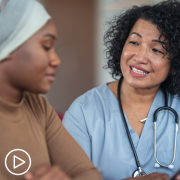
|

|
Transcript:
Dr. Nicole Rochester:
Hello and welcome. I’m Dr. Nicole Rochester, your host for today’s Patient Empowerment Network program. Today we’re going to be talking about how long cancer patients can truly get the best care no matter where you and your family live. We’re going to talk about things like how can I remove roadblocks in my care to gain access to state-of-the-art treatment? Will my insurance limit me if I want to get a second opinion? As a care partner, how do I best advocate for my partner, and is a clinical trial right for me? The answers to some of these questions we’ve received revolve around awareness, feeling empowered to ask questions, and connecting to the right resources at the right time. In this program we’ll be learning just that as we meet our guest expert. It is my honor and privilege to be joined by Dr. Olugbenga Okusanya, he is an assistant professor of Thoracic Surgery at Thomas Jefferson University Hospital. Thank you so much for joining us, Dr. Okusanya.
Dr. Olugbenga Okusanya:
Absolutely. It’s a pleasure to be here, thank you for having me.
Dr. Nicole Rochester:
Now we’re gonna start with talking about some of the barriers to lung cancer care. We know that there are many factors that can negatively impact outcomes for patients and families facing a lung cancer diagnosis, including things like social stigma for smoking, geographic location, socioeconomic status, insurance and access to care, financial hardships, and access to transportation. So, my first question to you, Dr. Okusanya is, what are some of the barriers that both lung cancer patients and their care partners face when they are seeking care?
Dr. Olugbenga Okusanya:
First of all, thank you very much for putting a spotlight on lung cancer care, we really need more people to help us treat this really terrible disease.
There are a number of barriers for our patients in order to get the best care possible. Number one, we actually find at diagnosis, we find that a lot of patients have lung nodules that have been seen because maybe they got a chest x-ray or a CAT scan for some other reason, and maybe they don’t get followed up on because they don’t have a steady source of healthcare, they don’t have a PCP or someone who regularly follows up on their health information. We have trouble also sometimes getting patients in the appropriate diagnostic studies that they need, oftentimes, we find patients that may show up in the hospital that have a significant problem and they may need a special kind of CAT scan or a biopsy, and they simply do not have the resources to get to said CAT scan or get to said biopsy, which is critical in making the appropriate diagnosis so we can get them to the right therapy. One of the biggest things that you mentioned is finding a specialist in terms of all aspects of lung cancer care, whether it is surgery, medical oncology, or radiation oncology, there are medical practitioners that mostly specialize in lung cancer care, and because of that, they’re gonna have access to different resources, they’re gonna think differently about the disease process and they’re gonna approach each patient differently because of the disease process So finding someone who really thinks and works in the lung cancer space all the time, I think it’s a barrier to patients getting really good care.
We also find that one, cancer care has a lot of hurdles, apart from proper CAT scans, biopsies, work-ups, actual interventions, there are a lot of steps that patients have to go, to get from even just getting a diagnosis to getting treatment and having patients move through that period of time, which is we hope usually four to six weeks in a sort of step-by-step manner can be extremely eliminating. So we really are trying to condense those things so patients can meet all the specialists, they need to get all the tests that they need to get in maybe one or two concise visits and then get into care, and lastly, as you mentioned, not having access to what we call multidisciplinary conferences is a limitation because there are more and more nuanced ways that lung cancer is presenting and being treated, that needs to be discussed between a surgeon and radiation oncologists and the medical oncologists, preferably all in the same setting, all at the same time. So having access to those clinics where we can have a really high-level discussion about the best thing to do for a patient, I feel is a significant barrier, especially for our patients with advanced disease.
Dr. Nicole Rochester:
Thank you so much. Wow, you have given us so much to think about and I appreciate your thorough answer. One of the things that I’m struck with as you talk about all of these steps and the fact that ideally, they need to be undergone within a certain time period, of course, it’s time-sensitive. And you mentioned navigating, and certainly, that’s something that I deal with on a regular basis, just the challenges of navigating through each one of those steps can be extremely difficult, you’ve gone through a lot of the barriers that patients and their family caregivers may face. Let’s talk about some of the solutions. Are there a few solutions that you can suggest for overcoming some of these barriers that you just described?
Dr. Olugbenga Okusanya:
Yeah, I think from the patient’s perspective, there are a number of things you can do to really help yourself. Number one is a good healthy dose of research, that means getting online, Googling, finding lung cancer experts, preferably in your region, finding out what their interests are, what are the things that they typically research and take care of, and then finding a way to get in contact with them. I think that is really step number one, it’s finding someone who specializes in the disease, and then to find someone that you actually get along, someone who you have a relationship with, a truly therapeutic relationship and invest in that person, and if they’re the right person for you, whether it be personality fit, whether it be background, you will find a relationship with them that will actually help you get through that process. I would also say many programs actually have nurse navigators who are people that help you navigate this process, that is quite literally why they are part of the health system, so if you can find programs and have nurse navigators, they can really be instrumental in setting up appointments that are either overlapped right after one another, all in the same place, things that really help smooth the edges of getting all the work I’ve done at on time.
And again, I would also recommend the patients, I would try to stack your appointments or stack your visits so that they are not quite so spread out over space and time, because a visit, usually it takes a few days to get a result, which then takes a few days to get a course of action, which then can sometimes provoke another test.
So, the more times than things are stacked together and information just a get to get in big packets, I think really the better for moving through the process.
Dr. Nicole Rochester:
I appreciate that. I think what I’m hearing in your answers is really the importance of patients putting themselves in the driver’s seat, which is another thing that I strongly advocate for. I think many patients and family members don’t see that as their role, and they don’t understand and appreciate the value of doing these things that you just talked about, doing your own research and finding providers with whom you connect it’s so incredibly important, especially when it comes to cancer and other serious diseases. So, I want to switch gears a little bit and talk about racial and health disparities, ethnic and health disparities, specifically in lung cancer care. I know that you have done some research in this area, and certainly being a person of color, this is something that I would imagine you relate to, so we know that the CDC and many other healthcare organizations have now declared racism a public health crisis, and certainly in 2021, we continue to see worse outcomes for cancer and many other chronic illnesses in people of color, so I’m curious, what do you think are the notable health disparities that are consistently seen in treating BIPOC patients living with lung cancer?
Dr. Olugbenga Okusanya:
Yeah, unfortunately, this is an area of interest of mine. And it turns out that the disparities are literally every single stage. There’s not an aspect of lung cancer care, which there is not a significant disparity that hinders the ability of minority patients to get better care, period at all stages. So overall survival for lung cancer for black patient is worse than white patients, even though black patients get diagnosed on average two to three years younger than their white counterparts. Black patients are less likely to get surgical therapy for early-stage disease, which is the actual care for an early-stage disease dates than black patients, than white patients, that gap has been narrowing over the last 20 years, but it is by no means closed. Black patients are unfortunately less likely to get an appropriate work-up to get the indicated tests. They are also less likely to get the chemotherapy when it is indicated, and they are less likely to be enrolled in clinical trials. So, literally at every step there is a significant inequity that affects black patients, and I think it’s really disheartening to see in a field where lung cancer is the most common killer and cancer, and frankly, there are lots and lots of patients who have options, who have good options that never get investigated and never get delivered.
Dr. Nicole Rochester:
That is extremely heartbreaking, and it’s sad to hear that we see the same disparities in lung cancer that we see with every other chronic condition, with every other cancer, certainly what we’ve seen recently with COVID-19 as well, and it really underscores what you said previously, which is the importance of being an advocate for yourself and doing your research and making sure that you really are getting the best care, which could be difficult when you’re struggling with your cancer diagnosis. Sometimes I get angry, I feel like we’re putting so much responsibility and so much burden on the patient. With that said, what are some things that patients of color can do in order to protect themselves from these inequities that you’ve talked about, starting with diagnosis and treatment, what can we do? What can patients of color do?
Dr. Olugbenga Okusanya:
So, I think the number one thing is to ask questions, the number one thing is to say, what are my options? What am I dealing with? What should I do or what shouldn’t I do? And to really make sure you get the most at that time when you see a physician, because that is really what we’re there for apart from the surgery, I’m really there to be an educator. I teach as much as I operate on a daily basis whether it be the medical training is whether in my patients, my job is to communicate information back and forth, so you really want to spend the time asking questions and getting as much information out, as much as you can. Number two is, see a specialist. There’s also very good data to indicate that as a black patient, if you see a board-certified thoracic surgeon, you are more likely to get lung cancer surgery than if you were to see a surgeon of unknown specialization, a general surgeon. So clearly the training gives specialist the ability to make finer determinations and discernments that I think in large part favor black and minority patients, so you wanna find someone who deals with these disease processes all the time because they’re gonna look at it in a much higher level and look at it with a lot more granularity.
Dr. Nicole Rochester:
Just have to repeat what you said, you said, I teach as much as I operate. That just really resonated with me, and I think that… That’s so incredibly important. Doctor means teacher, right? I think that’s the Latin… We are obligated to teach our patients, so I just really appreciate that that’s something that you incorporate in your daily practice. If we shift gears a little bit and talk about access and some of the concerns about treatment access for lung cancer patients, which you’ve actually alluded to, we know that sometimes these barriers that patients face actually limit their access to treatments, and you indicated surgery as being the mainstay and some difficulties with that, so how can we empower patients so that they don’t feel limited in their care, and how do we make them aware of these treatment options that are available, so that if they are in an office and maybe something’s being offered, but that’s not actually, the standard of care, how do we empower them to get that information and then to act on it?
Dr. Olugbenga Okusanya:
Yeah, so number one, which is something I think people do and they don’t realize how valuable it is, bring a friend to the appointment, don’t come by yourself, because you are in an incredibly vulnerable position, you’ve learned or are learning something incredibly emotionally charged and usually very scary. So, you want to bring someone who obviously is gonna love you and care about you, but has enough emotional distance from it that they can be your advocate, they can ask those questions in the room that you may just not be there mentally to ask. Number two, never be afraid to get a second opinion, if you’re lucky enough to live in a populous area with multiple health systems, get a copy of your chart, get a copy of your data, get your disc, make an appointment to see another specialist in another health system and see what they say. Because at the very least, if the information is concordant, then you’re gonna feel pretty good about saying, okay, then I should just go where I think I feel best or who I have the best sort of relationship with. And again, if you are not lucky enough to have that opportunity, I would be very aggressive about seeing if telehealth is an option to reach out to someone who is a specialist, I’ve had not happened to me in the past, I remember I had a woman who telehealth, me from Ohio, because she’d actually read one of my papers about lung cancer, and she sent her scans, uploaded them, I looked at them and I gave her my opinion, and this is the new age or medicine.
This is where we’re at now. This is a viable option, and even if telehealth isn’t an option, you can always just get on the phone. As a lung cancer specialist, a lot of the information I need can be garnered from test scans and images, so frankly, the physical exam has some role, but is not the mainstay of how a lot of the decisions are made. So even if I see your scans and I talk to you, I can give you an opinion over the phone, it takes me 15-20 minutes, and a lot of times, those visits may not even be charged, depending on who you actually ask to give you an opinion.
Dr. Nicole Rochester:
Wow. Free of charge. Okay, I see you’re teaching me something that I didn’t know. I’m a huge proponent of second opinions, I’ve talked to so many patients and family caregivers who think that they’re offending their doctor if they ask for a second opinion, so I appreciate that you brought that to the forefront and you deserve to have multiple opinions as you’re making these very important life-changing decisions. So, thank you for sharing that. This is a perfect segue. You mentioned telehealth, and we know that one of the barriers to receiving care, and you’ve indicated that in terms of having access to a multi-disciplinary team, having access to thoracic surgeons as opposed to general surgeons, so we know that that is impacted by where we live, and that often our geographic location can actually be a barrier to the receipt of quality care, so I’d love for you to just talk a little bit about how patients who may be in more remote locations can make sure that they are also receiving appropriate care for their lung cancer.
Dr. Olugbenga Okusanya:
Yeah, I think this is a very substantive challenge, I think this is one of the holes in healthcare, there’s these regions in the country where you just are not gonna have access to any number of surgical sub-specialist or radiation oncologist, or lung cancer specific oncologists. I think that is a really big challenge. I think we have actually learned through the pandemic that these physical barriers really are not the reason to not get the best care, so I think those patients should be exquisitely interested in telehealth and in phone calls, and I think most healthcare systems now, because the reimbursements have been approved for telehealth and actually now built infrastructure to support it as an ongoing concept. So now, if you are a patient that’s in Arizona and you want to talk to a doctor who’s in New Jersey, you can do that, you can make that happen. If you find someone, you Google them, you find a friend in that area who know someone, you can call their office and say, I want to have a telehealth visit, and as long as you have broadband internet and a phone, you can do it. You can have that conversation.
So, I would advocate for people to really make sure that you at least feel like people in the sort of local regional area that you can perhaps get to maybe two, three hours away, but you can imagine a scenario where you can get there, you can try and establish some level of care and some level of rapport with them. I think that’s something that has really opened, has been one of the few good things to come out of the pandemic.
Dr. Nicole Rochester:
I was gonna say the exact same thing. That is one… There haven’t been a lot of positive things, but that certainly is one of the positive outcomes of the pandemic, is this surge, and it’s not that we already had the capability, but it certainly was not being used to its maximum capacity. I appreciate that. So, speaking of telemedicine and COVID, think one of the challenges that patients and often care partners have is understanding when is a telemedicine or telehealth visit appropriate versus when do you actually need to go see that doctor in person, so… Can you help clarify that?
Dr. Olugbenga Okusanya:
Yeah, so I think in general, even if you start with the telehealth is, I think there’s very little downside to telehealth for almost anyone in general, because a lot of the information can be garnered from the patient record, from their scans. I think in general; it gives you 85% of what you need out of that interaction, and it may be more convenient for the patient, a lot of times it’s actually more convenient for the doctors, doctors have now found ways to work from home. They do have to have their clinic from home, it’s a much more relaxed environment than more efficient. I think there are times like for instance, I have to make decisions about offering surgery to patients who I consider to be moderate or high risk, I think there is a benefit and having that patient come and see me in the office because they have to somehow pass what we call the eyeball test, and that is a little bit of where this disparity comes in in lung cancer surgery, because it depends on who’s eyeball is looking at you, making your determination about what they think is gonna happen with you in surgery.
I remember… Actually, one of my favorite patients ever. She had data that did not look like she would tolerate surgery, everything about her data did not look favorable. And I saw her, I remember seeing her in person, and you could see the spark in her eye and energy that she had, and I said, you know what, we’re gonna do it. And she did great, she did phenomenally well. And that is a case where if you’re in the population of patients that may be slightly more moderate, slightly more high risk, and you need someone to really look you in the eye and you say, I’m going to do what it takes to get through this. I think that’s the patient where the in-touch, in-person visit really is that extra touch that can be benefited.
Dr. Nicole Rochester:
Wow, I love what you said about the spark in her eye and also how you connected that to health disparities, and I don’t know the race or ethnicity of the patient that you’re describing, but we certainly know that that makes a difference, and I just wonder if that had been a different physician, would they have seen that same spark? And I think it just goes back to what we were talking about earlier, and the importance of finding a physician or health care provider with whom you connect, someone that actually respects you, someone that listens to you and see you as a whole person. So, the fact that you were willing to go beyond that data on her chart, which screamed, this is a poor surgical candidate, met her in person, and something about her let you know that she was gonna be okay.
Dr. Olugbenga Okusanya:
Agree. And that’s why in medicine and surgery is still art at the end of the day, it’s still an art. You make decisions, best informed decisions, but there’s a lot of it that is still really special and mystical in a way, and I think having that in-person interactions will let you practice that and it’s exactly what you said, you want to have a really nice relationship with the physician, especially anyone that’s gonna be doing anything that might be invasive or dangerous because for the most part, you meet someone for 45 minutes and then you sign up for what could be a life-threatening event. So, you, the physician and the patient should feel really good about that interaction and whatever that energy is, it’s really important, it’s a little bit kind of sacred, I think, and I think it’s really valuable to invest in that if you don’t like the surgeon, you really don’t feel like it’s a good fit or you don’t like your oncologist, find someone else. You’ll do better in the long run, for sure.
Dr. Nicole Rochester:
That is so incredibly important. I agree, 100%. So much of healing is beyond just the nuts and bolts of the medical care that we provide, or in your case, the surgical care, there’s so much more to that, that’s not really well studied, but that relationship and that connection is key.
Dr. Olugbenga Okusanya:
Critical, and that’s not to say that necessarily the person has to be like the warmest, friendlies, the most fun person you ever met, some people prefer a more yes ma’am, no ma’am, clear cut, well-defined boundaries of a relationship. Some people prefer a big hug and a laugh and a joke, so if you’re getting what you need, that’s exactly what you need, and if you’re not getting what you need, you should think about your other options.
Dr. Nicole Rochester:
Love it, love it. Alright, Dr. Okusanya, so we’re gonna talk now about staying on that theme of empowering patients, we know that all of these barriers that we’ve been discussing can impact and limit treatment options, and we know that late diagnoses or not getting the proper care at the outset will lead to more complications and unfortunately, even death in some situations, and as you’ve alluded to, we know that patients who are educated about their illness, patients who take an active role in their medical care receive better care, they have better outcomes. So, what are some key questions that patients and care partners should ask at the very beginning when they are first beginning this journey with lung cancer?
Dr. Olugbenga Okusanya:
So, I would say… Question number one that I would ask is like, do you specialize in this? Is something that you do on the regular basis? What percentage of your practice is lung cancer care? You would really like an answer that’s more than 50%, you would like someone who sees lung cancer patients and take care of lung cancer patients as a matter of routine. And something I would also say as a patient, you kind of want your care to be routine, you don’t wanna be someone where things are just being figured out for the first time, you really wanna have someone who does this all the time. The other questions I would ask are, can you tell me what all the options are, not just the one you’re offering to me, I really wanna know what all the options are, and I always tell patients the options are really very broad. A physician chose the option is one, you may wanna not do anything that is an option, you know saying We know it’s there; we understand and we’re gonna watch it or not do anything is a very reasonable option they should tell you about biopsies or surgery or non-invasive therapeutic modalities.
You really wanna say, I want you to give me the laundry list, all the things that are possible in the institution that I’m sitting in. And then I would also ask, what are the things that you are not considering before that might be options. What are the things that maybe you’ve ruled out in your mind and can you tell me more about that? Because we’re very physician, they’re very good at heuristics, really good at skipping steps and making next logical jobs, so it’s good to ask one of those steps that you skipped in your life and why did you skip them? And then the last thing I would ask is, Is this the kind of case that should be discussed in a multi-disciplinary clinic or conference? Is there anybody else I should talk to about this problem? And I think if you can ask those questions and feel very confident about asking those questions again, most practitioners who are high level and specializing, this will not be offended, they will be glad that you’re asking the question, it will be a relief for both of you. I think if you can ask those questions, you can really help to eliminate some of those ascites and really get on the right trajectory from the beginning.
Dr. Nicole Rochester:
Those are such important questions, starting with the first one you provided, which is… Do you specialize in this? I think that we spend a lot of time sometimes betting, other professionals, even hair stylists, or if we wanna get our car fixed, we wanna go to the person that specializes and whatever is wrong with that particular problem, but we don’t always take such care with our most precious commodity, our body. So, I think that’s so incredibly important that we ask that question, and it’s not to make bad comments about those who don’t, but people like yourself have trained for many years, and there’s something to be said about that when this is your area of focus, and this is what you do day in, day out. So, I love that, I also really love what you said about kind of getting inside of the brain of the doctor, because you’re right, we’re skipping steps and we’re going through algorithms, but we don’t often bring the patient into that process, and so I really love the idea of the patients questioning, are there things that you didn’t consider and why? And really having a full understanding of all of those treatment options, and maybe if the doctor has erroneously ruled out one of those possibilities based on maybe an assumption that gives the patient an opportunity to clarify that.
That is very powerful.
Dr. Olugbenga Okusanya:
And I would say, as a patient, oftentimes, we wanna describe very positive feelings towards your physician, it’s a notch a very natural thing to do because you want them to be good, so that eventually you’ll be good and they’ll take good care of you. You wanna ascribe those positive thoughts, and I think that’s very reasonable, but we should approach that with a little bit of question because this is someone who has a lot of information and a lot of knowledge, and you wanna make sure you are getting everything in the middle, so it doesn’t get lost in translation. You wanna make sure you’re there for that conversation.
Dr. Nicole Rochester:
Absolutely. What advice do you give to patients that you see so that they can feel empowered Dr. Okusanya? Is there any specific advice that you give when you see patients and things that just helped them to take this active role that you’ve been describing?
Dr. Olugbenga Okusanya:
Number one, I tell patients to bring someone with them to their appointments, someone who can stand by as within reason someone who can be there to listen as well, ’cause usually I say, if I tell you 100 things in an appointment which can legitimately have, I could give you 100 unique points of information and in 1 45-minute visit. If you catch 30 of them or 35 of them, you really understand that. I think that’s a lot because they’re very emotionally charged. So, hopefully someone else, it’s with you, maybe catches another 30 or 40, and that gets you to a point where you can really sit down later and understand. I encourage patients to take notes to write things down, and if they want to, to record, to have audio recording of the session, I wouldn’t say anything to you now that I wouldn’t say in a month or in a year, or anywhere else. I’m gonna tell you exactly what I think and I… And if I have uncertainty, I will expose that uncertainty, I will let you know that this is a case that could go either way. And this is a piece of information that I’m looking back and forward between these two options and that really helps the patients later on go back and say, Did I really hear that right? Did I really understand it, right? So that you can feel like you’re getting the best care, and I really think that you have to make sure that you feel comfortable with the provider.
I think that’s just the number one thing. Are you happy with them? Do you like the way they comported themselves? Did you like the way they spoke to you? Did you like their staff? Also remember, you’re likely gonna be interacting with their staff as much as you interact with the physician, so the other people in the office, the front desk people, the nurse practitioners, the medical assistants, those are the people that you’re gonna spend a lot of time talking to. Did you have a good rapport with them? Also, all that stuff counts to make sure that you’re getting the best experience possible and that you can really be an advocate for yourself.
Dr. Nicole Rochester:
That is incredible. Well, it’s just about time for us to wrap up, I just wanna reiterate, you share so many pearls today, but I just wanna reiterate a few of them, and they really resonate with me as a former caregiver and as a health advocate, but that’s the importance of asking questions, the importance of bringing a buddy, and I appreciate that, particularly in your field, when we go into a doctor’s office and the word cancer is stated, everything else goes out of the window, and even in less threatening situations, there’s data that shows that… I think about 20% to 25% of what we say as physicians is actually retained, so certainly when you get a bad diagnosis, that number is even lower, so bringing somebody with you who is not necessarily emotionally detached, but they can literally kind of be the note taker, and they may even pick up on some nuances and things that you may have missed as a patient is so incredibly important. I love that you’ve offered the option of recording, I think that’s also another tool that many patients and family members aren’t aware of, and I think there’s an assumption, and it’s true to some degree that doctors don’t wanna be recorded, but knowing that that is an option.
The fact that the care that we receive really is impacted by whether or not the person specializes in lung cancer, a thoracic surgeon, and being empowered to ask that question, is this your specialty? How often do you see patients like me and being empowered to ask those questions that ultimately won’t lead to improve care is just so incredibly important, and I think just everything that you’ve shared that really allows the patients and the caregivers to understand just how important their role is you’re the one that’s going to take out the cancer and you’re the one that’s going to get them better, but there’s so many things that happen before that step, before they are on that operating room table that is so important. Do you have any closing thoughts that you’d like to share with us, Dr. Okusanya?
Dr. Olugbenga Okusanya:
I think for patients and their advocates, I think it’s really important number that you’re putting together a health care team. You’re putting together a group of people like the avengers. You’re putting together a bunch of people to come together to help you deal with this health problem. You are entering into a therapeutic relationship, so that relationship has to be healthy in order for you to have the best possible outcome, you should feel good about, you know, your doctor is gonna be very skilled, became very knowledgeable, and just like we talked about before. You really wanna find someone who has the heart of a teacher, someone who can sit down and explain it to you in a way that’s gonna be digestible and that is gonna be actionable. So I think if patients and advocates remember that you wanna build a really solid, a really healthy relationship with someone who’s gonna help you take care your health, I think if you do that, you’re going to be in excellent care.
Dr. Nicole Rochester:
Awesome. Well, I really enjoyed this time. Thank you so much, Dr. Okusanya, you have given us so much useful information, and I wanna thank all of you again for tuning into the Patient Empowerment Network program.
Is the COVID-19 Vaccine Safe and Effective for People With Colon Cancer?
Is the COVID-19 Vaccine Safe and Effective for People With Colon Cancer? from Patient Empowerment Network on Vimeo.
Dr. Smitha Krishnamurthi, a colon cancer specialist at Cleveland Clinic, provides vaccine safety information and discusses the effective immune response after COVID-19 vaccination in patients with colon cancer.
Dr. Smitha Krishnamurthi is a gastrointestinal medical oncologist at the Cleveland Clinic. Learn more about Dr. Krishnamurthi here.
See More From The Pro-Active Colon Cancer Patient Toolkit
Related Resources:

|

|

|
Transcript:
Katherine Banwell:
Is the COVID vaccine safe and effective for people with colon cancer?
Dr. Krishnamurthi:
Yes. The COVID vaccine is safe. We have no data that patients with colorectal cancer or patients who are undergoing chemotherapy are at any increased risk of any side effects from the vaccine. People should be able to make a good immune response. Patients who are not able to make a good immune response are those who are getting very high-dose chemotherapy, like a bone marrow transplant or an organ transplant. But chemotherapy for colorectal cancer should not be problem. We basically advise – I ask all my patients to get the vaccine. They should just get it whenever they can. They don’t have to worry about timing in regards to their chemotherapy.
Katherine Banwell:
Okay. Dr. Krishnamurthi, thank you so much for joining us today.
Dr. Krishnamurthi:
Katherine, thank you so much for having me. It’s been such a pleasure.
Colon Cancer Treatment and Research News
Colon Cancer Treatment and Research News from Patient Empowerment Network on Vimeo.
What’s the latest colon cancer treatment and research news from the American Society of Clinical Oncology (ASCO) meeting? Dr. Smitha Krishnamurthi shares updates about research findings that were presented at the meeting along with exciting ongoing research in colon cancer.
Dr. Smitha Krishnamurthi is a gastrointestinal medical oncologist at the Cleveland Clinic. Learn more about Dr. Krishnamurthi here.
See More From The Pro-Active Colon Cancer Patient Toolkit
Related Resources:

|

|
Transcript:
Katherine Banwell:
Welcome, Dr. Krishnamurthi. Would you mind Would you mind introducing yourself?
Dr. Krishnamurthi:
Sure, it’s my pleasure. Thank you for having me, Katherine. I’m Smitha Krishnamurthi. I’m a medical oncologist. I specialize in taking care of patients who have colorectal cancer and other gastrointestinal cancers. As a medical oncologist, I treat patients with drug therapy like chemotherapy and immunotherapy.
Katherine Banwell:
And where are you located?
Dr. Krishnamurthi: I work at Cleveland Clinic in Cleveland, Ohio.
Katherine Banwell:
Excellent. Thank you so much.
Cancer researchers came together recently to share findings at the annual American Society of Clinical Oncology meeting, also known as ASCO. Are there highlights from the meeting that patients should know about?
Dr. Krishnamurthi:
Yes. That’s always such an amazing gathering of knowledge. Thankfully, it’s continued virtually at least due to the pandemic. This past ASCO last month, some of the major highlights in colorectal cancer were the final overall survival results were presented from the study of pembrolizumab versus chemotherapy as first-line treatment for patients with metastatic colorectal cancer with deficient mismatch repair or MSI high status.
These are the patients who are predicted to benefit from immunotherapy.
We’d already seen earlier results that the patients who received the immunotherapy up front had a much-improved time for the cancer to regress. Here, they presented the overall survival results, which showed that the median survival for patients who received chemotherapy was three years, meaning half the patients lived shorter time, half lived longer. For the patients who received the pembrolizumab, they hadn’t even reached the median survival at five years.
So, it looks very important that we know this MSI status or mismatch repair status from the beginning, so that we can offer the right patients immunotherapy first.
Other highlights were, for example, for patients who have cancers that overexpress HER2/neu. It’s an oncogene. When it’s overexpressed, it tends to drive growth of cancers.
We don’t have any FDA-approved drugs for HER2-amplified colorectal cancer, but there are many studies showing that those patients with that type of cancer benefit from targeting this HER2 protein. There are, of course, approved drugs for HER2/neu-amplified breast cancer and stomach cancer. One of these drugs is trastuzumab deruxtecan.
It’s a drug that targets the HER2/neu protein, but it’s connected with chemo. So, it’s like bringing chemo right to the tumor. The results showed a very high response rate. But it does have a peculiar toxicity of causing inflammation in the lung. So, it’s another treatment option that could be approved. It’s good to see that we’re getting more treatment options there.
Katherine Banwell:
What are you excited about when it comes to colon cancer research?
Dr. Krishnamurthi:
There are so many important questions we still need to learn the answers to. I find that patients who have, of course, a mutation of the KRAS or NRAS gene and have metastatic cancer, they have fewer treatment options than when those genes are normal.
KRAS is a very important oncogene driver of cancer in colorectal cancer, but also in lung cancer and pancreatic cancer. For many decades, it was thought that there was no way to target this protein. Now, we’re seeing that there’s a certain type of KRAS mutation – KRAS G12C – that can be targeted with drugs that now are approved in lung cancer.
It’s a small fraction of colorectal cancer patients who have that mutation, but it’s like we’re beginning to crack this code. The most common KRAS mutation is G12D. There is a company – Mirati – that has a candidate G12D inhibitor that’s going to enter clinical trials this year. It’s very exciting.
There was recently a press release onvansertib, which is a polo-like kinase inhibitor, combined with chemotherapy, a second-line treatment for patients with KRAS-mutant colon cancer, showing a much higher response rate than we would expect with the chemotherapy alone.
That will need to be validated in a large, randomized trial, but that’s looking very exciting. Then the other aspects that I’m most excited about are how to get immunotherapy to work for more of our patients.
We know that patients who have abnormal mismatch repair or MSI-high cancers can benefit remarkably in the metastatic setting and there are studies going on in the early-stage setting and there are reports of it looking quite promising. But how do we get it to work for the majority of patients who have normal DNA mismatch repair or MSS, microsatellite stable cancers? That’s an area of great interest.
We’ve seen a study in the Netherlands where they treated patients with normal DNA mismatch repair, early-stage colon cancer, with just two doses of immunotherapy before going to surgery for their early-stage cancer. I was surprised to see like four out of 15 patients responded to the treatment. Perhaps earlier stage cancers may be more responsive to immunotherapy. Definitely looking forward to more updates from that study, which we’ll probably hear in the fall at the European Society of Medical Oncology meeting in fall of 2021.
Then, of course, the other area that really interests me is what is causing this epidemic of colorectal cancer in young adults? This is really a matter of laboratory studies and epidemiologic studies, but that’s also an area of great interest.
Katherin Banwell:
There’s an epidemic among younger people?
Dr. Krishnamurthi:
Yeah. I think of it as an epidemic in that colorectal cancer has definitely been increasing in young Americans and young people around the world in many countries.
Basically, clearly, there’s been an increase since the 1980s. It seems to be something environmental because it’s related to time. So, it’s not inherited. Some of our patients below the age of 50 diagnosed with colorectal cancer do not have an inherited cause. A study from Ohio State found that 16 percent have an inherited cause. So, 84 percent of them do not. This is definitely increasing, particularly of rectal cancer. I think it must be something environmental. Possibly something like we’re ingesting because our colon is exposed to what we eat. But we really don’t know yet.
And so, I just advise all my patients and everyone who is interested to just try to eat as much natural food as we can. To try to minimize processed foods and chemicals.
Because I think that’s the best we can do until we really identify the cause.
Should Your Family Members Be Screened for Colon Cancer?
Should Your Family Members Be Screened for Colon Cancer? from Patient Empowerment Network on Vimeo.
When should members of your family get colon cancer screening? Dr. Smitha Krishnamurthi from Cleveland Clinic shares screening guidelines for family members and discusses the necessity of genetic counseling.
Dr. Smitha Krishnamurthi is a gastrointestinal medical oncologist at the Cleveland Clinic. Learn more about Dr. Krishnamurthi here.
See More From The Pro-Active Colon Cancer Patient Toolkit
Related Resources:
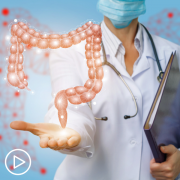
|

|

|
Transcript:
Katherine Banwell:
If you’ve been diagnosed with colon cancer, what is the guidance for screening family members, such as children and siblings?
Dr. Krishnamurthi:
Yes, this is an excellent question. We tell all our patients who have been diagnosed with colorectal cancer that their first-degree relatives should start screening by age 40, but also 10 years younger than the youngest affected member of the family. So, whichever is younger.
If my patient is 45, definitely that person needs to have genetic counseling because they’re young for colorectal cancer. Then we’d recommend at least start by age 35 for their children or siblings, even if no inherited cause is found.
Katherine Banwell:
Okay, all right.
What Should Be Considered When Choosing a Colon Cancer Treatment Approach?
What Should Be Considered When Choosing a Colon Cancer Treatment Approach? from Patient Empowerment Network on Vimeo.
Dr. Smitha Krishnamurthi, a colon cancer specialist from Cleveland Clinic, reviews considerations when choosing therapy, including staging and test results, as well as how clinical trials fit into treatment planning.
Dr. Smitha Krishnamurthi is a gastrointestinal medical oncologist at the Cleveland Clinic. Learn more about Dr. Krishnamurthi here.
See More From The Pro-Active Colon Cancer Patient Toolkit
Related Resources:

Newly Diagnosed With Colon Cancer? Key Advice From an Expert |

Your Colon Cancer Care Colon Cancer Toolkit: Office Visit Planner
|

How Speaking Up Can Positively Impact Your Colon Cancer Care
|
Transcript:
Katherine Banwell:
What are the main factors you take into consideration before a treatment approach is decided on?
Dr. Krishnamurthi:
For treatment of anyone with colorectal cancer, most important, of course, is the stage because stage determines whether it’s surgery alone or do we need to use chemotherapy or radiation? Or if it’s metastatic, is it systemic treatment only? We also look at the biologic features of the cancer, which we’re learning more and more are very important.
For example, we want every patient to know their DNA mismatch repair status. This is basically, is the cancer missing a gene that repairs damage to DNA? Then if that’s true, then we say they are DNA mismatch repair deficient. Or another term is “high microsatellite instability.” Mismatch repair deficient or microsatellite instability high, or you might hear MSI high.
That’s very important that we test that on all patients with colorectal cancer because in the early stage setting, it’s important because this is a way to identify patients who may have Lynch syndrome, the most common type of inherited colorectal cancer.
And also it impairs their prognosis. We know these patients tend to have a better prognosis. For example, for stage 2, we wouldn’t even have a conversation about chemotherapy if we know the patient has abnormal DNA mismatch repair or is MSI high. Then for patients of metastatic disease, it’s very important to know this upfront because those patients do better with immunotherapy as their first treatment.
So, we want to see those results for each patient. Then for our patients with metastatic cancer, we also need to see some other genetic mutations such as RAS, KRAS and NRAS gene mutations, because that affects what treatments we use.
Also, BRAF gene mutations are very important because of the particular regiment we use for treatment of that type of cancer.
We’re looking at the extent of the disease, what are the molecular features, and then also, of very importantly, what can the patient tolerate? What are the patient’s goals? We have a discussion about side effects and help them make the best choice for themselves.
Katherine Banwell:
Where do clinical trials fit in?
Dr. Krishnamurthi:
That’s an excellent question because clinical trials actually could be appropriate at any step along this pathway.
There are clinical trials that may be looking at tests to diagnose cancer better or detect it earlier.
There are treatment trials where they may be looking at standard treatment versus something investigational or standard plus investigational. Those sorts of treatment trials may be very interesting as the initial treatment or they could be used when a person has gone through all the standard treatments. Then there’s nothing left to do but try investigational. There are also studies that are looking at supportive care – a new treatment for nausea, for example. There are studies that are looking at the biologic factors of the cancer. Maybe asking a person to donate blood or give permission to use their tumor sample. By participation in these studies, people who volunteer for that are being so generous with their time and their lives.
But that’s how the field advances, especially for treatment trials. This is a way to access cutting edge treatments because the study is being done because the drug looks promising.
I think it’s very important to ask about clinical trials from the beginning and every time there’s a decision point made in the treatment.
How Is Colon Cancer Treated?
How Is Colon Cancer Treated? from Patient Empowerment Network on Vimeo.
Dr. Smitha Krishnamurthi, a colon cancer specialist from Cleveland Clinic, shares an overview of colon cancer treatment and which approaches are used for each stage for optimal patient outcomes.
Dr. Smitha Krishnamurthi is a gastrointestinal medical oncologist at the Cleveland Clinic. Learn more about Dr. Krishnamurthi here.
See More From The Pro-Active Colon Cancer Patient Toolkit
Related Resources:

|

|

|
Transcript:
Katherine Banwell:
Can you provide us with an overview of how colon cancer is treated?
Dr. Krishnamurthi:
Yes. Colon cancer is treated based on the stage. It’s a disease that, for the vast majority of patients, is only cured with surgery.
If it can be surgically resected, that’s how this disease is cured. So, it’s very important that we do all we can to maximize early detection because it’s a highly curable cancer when it’s caught early. For early-stage colon cancer, patients are treated with surgery. So, stages 1, 2, and 3.
If it’s rectal cancer, we do some treatment before surgery. We give some chemotherapy and radiation for stages 2 and 3 beforehand to maximally shrink down the tumor to enable the surgeon to take the tumor out of the pelvis with normal tissue all around, like negative margins. Rectal cancer tends to be more complicated surgery because of its location in the pelvis.
So, it’s a little bit different from colon cancer in that we do that chemo radiation and chemotherapy up front. Whereas, for colon cancer, patients who have early-stage disease have surgery. And then, if it’s just stage 1, and this is true for rectal also, they’re done.
Excellent prognosis and go on to surveillance.
But if it’s a stage 2, then in colon cancer we have a discussion about chemotherapy afterwards because that could increase the cure rate for some patients. But for stage 3, we absolutely want to offer chemotherapy to our patients with colon cancer because of this very long, proven track record that chemotherapy can increase the cure rate for stage 3 patients, so when it’s gone to lymph nodes. Then if the disease is metastatic, meaning it’s spread to other distant organs like liver or lung, chemotherapy is the mainstay of treatment, generally speaking.
But there are subsets of patients who benefit from surgery. So, if the cancer is metastasized to just the liver or the lung or both organs, but in limited fashion, there is a track record for patients being cured with surgery.
We always are considering that when we have patients with metastatic disease. My first thought is, is this cancer potentially curable? Then we go from there. In some cases, it’s clear that it’s not curable; it’s widely metastatic. Then there’s no point in subjecting a person to surgery and we know that chemotherapy or drug therapy would be the mainstay of treatment.
What Are the Stages of Colon Cancer
What Are the Stages of Colon Cancer from Patient Empowerment Network on Vimeo.
Colon cancer specialist, Dr. Smitha Krishnamurthi of Cleveland Clinic, provides an overview of the stages of colon cancer and how these stages are determined.
Dr. Smitha Krishnamurthi is a gastrointestinal medical oncologist at the Cleveland Clinic. Learn more about Dr. Krishnamurthi here.
See More From The Pro-Active Colon Cancer Patient Toolkit
Related Resources:

|

|

|
Transcript:
Which Prostate Cancer Treatment Is Right for You? What You Need to Know
Which Prostate Cancer Treatment Is Right for You? What You Need to Know from Patient Empowerment Network on Vimeo.
What do you need to know before deciding which treatment is best for YOUR prostate cancer? Dr. Maha Hussain discusses the role of key tests in choosing therapy, including biomarker testing, provides tips for partnering with your care team and reviews recent research news.
Dr. Maha Hussain is the Deputy Director of the Robert H. Lurie Comprehensive Cancer Center of Northwestern University. Learn more about this expert here.
See More From INSIST! Prostate Cancer
Related Resources
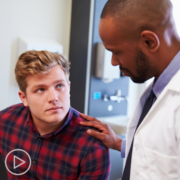
How Do Genetic Mutations Impact Prostate Cancer Treatment Options? |

|
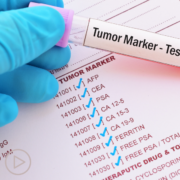
|
Transcript:
Katherine:
Hello, and welcome. I’m Katherine Banwell, your host for today’s program. Today, we’re going to discuss how to access the most personalized prostate cancer therapy for your individual disease and why it’s essential to insist on key testing. Before we meet our guest, let’s review a few important details.
The reminder email you received about this program contains a link to program materials. If you haven’t already, click on that link to access information to follow along during this webinar. At the end of this program, you’ll receive a link to a program survey. Please take a moment to provide feedback about your experience today in order to help us plan future webinars.
Finally, before we get into the discussion, please remember that this program is not a substitute for seeking medical advice. Please refer to your healthcare team about what might be best for you.
All right, let’s meet our guest today. Joining me is Dr. Maha Hussain. Dr. Hussain, would you please introduce yourself?
Dr. Hussain:
Sure. Thank you, Katherine.
It’s my pleasure to join you. And to the audience, nice to meet you all virtually. My name is Maha Hussain. I am a genitourinary medical oncologist with a focus on prostate cancer and bladder cancer. And I am a professor at Northwestern University Feinberg School of Medicine, Department of Medicine, and endowed professor there. And I also serve as the deputy director for the Robert H. Lurie Comprehensive Cancer Center of Northwestern University.
Katherine:
Wonderful. Thank you so much for taking time out of your busy schedule to join us today.
Dr. Hussain:
My pleasure.
Katherine:
I’d like to start by asking about developments in prostate cancer research and treatment. Experts recently gathered at the annual American Society of Clinical Oncology meeting, also known as ASCO, to share their research.
So, what were the highlights from that meeting that you feel patients should know about?
Dr. Hussain:
I think probably perhaps I can focus on two major – what I would consider major highlights, and those were the results from two randomized Phase III clinical trials.
One of the trials is called the VISION trial. And the VISION trial was a Phase III randomized trial evaluating lutetium-PSMA-617 treatment in patients with metastatic castration-resistant prostate cancer. And the delightful thing about this study is that that study was positive. The PSMA story has been really going on for a few years now. And there’s the PSMA for purposes of scans, imaging, to assess the cancer. And the FDA just approved a PSMA PET imaging this year.
I think it was in May when it was approved. And that would help better define if the cancer is spread or not, and it help with the decision regarding treatment. But the second part is treatment purposes, so identifying the cancer location and trying to attack it with a specific sort of targeted attack to the tumor is really important.
And so, the FDA is currently looking at this particular agent. And I am hopeful that we will hear soon from the FDA, hopefully before the end of the year, and maybe – who knows? – maybe by summer, middle summer or end of summer. Because I do think that would be a major benchmark in there. And so, that’s one thing.
The other clinical trial that I thought was interesting from a data perspective – and for disclosure, I am one of the investigators on this study. And this was an intergroup Southwest Oncology, or SWOG, sponsored clinical trial. So, it’s a federal study that Dr. Aggarwal presented. And this was a study that was aiming at maximizing, again, the anti-tumor therapy with the use of a drug which I call is the younger brother of abiraterone.
So, abiraterone is a drug that is FDA-approved and has been around for several years right now for both castration-resistant prostate cancer and certainly hormone-sensitive metastatic disease. And so, TAK 700 (Orteronel) is a younger brother, I call it, of abiraterone. And one of the potential advantageous when this trial was designed was the fact that you don’t need to use prednisone. And the trial was completed. It was a national clinical trial. And what was interesting is that there is certainly what appears to be a potential benefit, but not in terms of the conclusive based on the way the study was designed.
Having said that, what I thought was remarkable is that patients who basically were only on the control arm was LHRH therapy, so this could’ve been like Lupron, Zoladex, or something like that plus bicalutamide, which is what we call combined androgen deprivation. And that was sort of like the strongest control arm we could do at the time when the trial was designed.
Remarkably, the patients who were on that arm had a median survival of basically 70 months. That’s the median. That’s the bell-shaped curve with the number in the middle. Seventy months is probably the longest ever in any other randomized trials in this disease space, in the hormone sensitive space. So, that tells us is that men are living longer with prostate cancer, even though it’s metastatic disease; and, yes, it’s not necessarily curable, but men are living longer. And it’s a function of all of the better treatments that are supportive care and everything that was going on.
And so, the control arm, as I mentioned, was the 70.2 months. The actual experimental arm was about 81.1 months. And again, I don’t know where things will go from this. Obviously, I’m not the sponsor not the FDA. But the point here is that men are living longer, and so wellness and health become even more so important than we ever did. And as I tell my patients, every day you’ll live longer. The odds of living longer is there because of better treatments coming on.
So, to me – not to take too much time from the interview – to me, these were the two highlights: new, approved – I’m sorry, new treatment that I’m hoping will be FDA-approved and, obviously, the fact that men are living longer.
Katherine:
How can patients keep up to date on the research that’s going on?
Dr. Hussain:
I’m a bit biased, obviously. I’m a member of ASCO.
And what I would recommend to my patients is to look at the cancer.net website. The cancer.net is a website that is an ASCO-generated website specifically for patients and families to review. It is vetted. The committees are not run just by physicians, oncologists, a multidisciplinary team, but also patient representative. So, the lingo and the presentation are lay-friendly, I call it, there.
The other part I would say, the NCI website, and the American Cancer Society, the American Urological Association. I would say there’s a lot of stuff on the media. The difficulty is vetting what is sort of fake, what is not so accurate, or bias versus there. I also think that the NCCN has also some resources for patients.
And one thing I always tell patients: explore, look, but make sure that you talk to your doctor about the meanings of everything because sometimes it can be not – it could be misleading, I should say, or maybe not very clear on what the implications are.
Katherine:
Right. One thing that’s a topic on the mind of many people right now is COVID.
Dr. Hussain:
Yeah.
Katherine:
Is the COVID vaccination safe and effective for prostate cancer patients?
Dr. Hussain:
The answer is yes and yes. So, I have to say, by default, I deal mostly with older men. Age brings in other comorbidities. And certainly, while I see all kinds of shades of gray in terms of the disease extent, going all the way from newly diagnosed all the way to end-stage disease, the bulk of the patients I end up seeing tend to have more systemic disease and have other issues going on. And I have to say, surprisingly, less than a handful of my patients had the infection.
Only one required hospitalization with supportive measure, but not even needed incubation; however, he needed a lot of CPAP and other respiratory support. I’m not aware of any of my patients or my colleague’s patients who deal with prostate cancer that have died from COVID. So, I would say that’s the good news and that we have not seen a big hit in the population that I deal with.
I also know that I would say 99.9 percent of my patients have opted to be vaccinated, and they have tolerated the vaccine just fine. There’s only one case, which I actually even saw just this week, who had been vaccinated but have a very, very severe end-stage disease with significantly compromised bone morrow, who got infected but hospitalized for a few days and is recovering.
And so, I would say just by the pool of patients I see, my answers are yes and yes.
Katherine:
Very good. Thank you.
Dr. Hussain:
And I would encourage all the audience to go get vaccinated. I myself am vaccinated. And I’ve advised all my family members to be vaccinated, just to clarify that too.
Katherine:
Good. Good to know. Dr. Hussain, we’re going to spend most of this conversation talking about advanced prostate cancer. But before we move on, would you give us a brief overview of the stages of prostate cancer?
Dr. Hussain:
Absolutely. So, with any cancer, we count sort of like four stages. But I would say in prostate cancer the biggest thing is when the cancer is newly diagnosed, which could be confined to the prostate or locally advanced, meaning the cancer has gotten outside the capsule of the prostate but still within that pelvic region.
There is the group of patients who have pelvic lymph nodes at time of diagnosis. And of course, that is the patients who have systemic disease, which would be technically stage four. Now, the systemic disease implies any abnormality that is found on scans that is beyond the public region. So, that could be lymph nodes in the back of the belly. That could be thoracic lymph nodes. That could be neck nodes. That could be lung lesions, of course, or bone, or liver.
Now, the most common area where the cancer goes to is really – when we talk about metastatic disease – is the bone. And then lymph is another area where the cancer goes to. Prostate cancer that is confined to the prostate is curable in the vast majority of patients. There is a category of men who undergo surgery or radiation, and then their PSA begins to go up afterwards.
And this is what we call biochemical relapse. And this is a situation where we know that, in all likelihood obviously, especially of the patients who have had their prostate out, that the cancer has spread. With the current imagine, a good chunk of times, we do not find anything because we’re able to pick up PSA that goes from undetectable to 0.2 to 0.3, but there’s not enough cancer to show up on the scans. We’re hoping, obviously, the better scans, the PET Axumin scan, the PSMA scans are going to help us to identify sites of metastases.
But this is a group of men where if there is no cancer visible and the only thing we’re dealing with is PSA that’s going up, if they’ve had surgery, then there’s room for what we call salvage therapy with radiation and hormonal treatment. The case is a bit different if there’s only just the prostate – if radiation was given previously. And of course, we talked about metastatic disease.
Katherine:
Yeah. Once someone has been diagnosed, what tests are used to help understand the aggressiveness of their disease and their overall prognosis?
Dr. Hussain:
Well, I think there is different basic things, as in, what was the extent of the cancer? How did it look under the microscope? And what is the PSA levels? So, these are the general things. There are different sort of genomic panels that the urologist will use to kind of decipher and other things to kind of help with figuring out aggressiveness and things like that. What I would say is this, is a patient who is diagnosed and has a cancer, and at a minimum has what we consider a Gleason 7 prostate cancer – so, that’s the scoring system that is done with the original Gleason score, or the new patterns where it’s talking about intermediate risk to high risk – to me, this is a cancer that needs to be treated.
And again, that’s all to do with if a person has other comorbidities, they have some other terminal condition that’s a separate story. But talking generically, that would be when we would recommend. And these are the patients that are generally not seen by the medical oncologist. They’re seen by the urologist, and then they can refer them to radiation oncology also for consultation.
Katherine:
Now that we understand how test results can help inform a patient’s cancer and how it may behave. Let’s discuss how they can affect treatment options for men with advanced disease. First, let’s do a brief review of the treatment types currently available. There’s hormone therapy, right. What else?
Dr. Hussain:
Perhaps, it’s simpler if we focus on advanced disease, specifically metastatic disease.
So, if that’s the deal, then the backbone of treatment is hormone treatment. And it really is. We call it hormone, but technically it’s an anti-hormone. What we’re trying to do is shut down the hormonal pathway that stimulate the testes, which is the factory that makes testosterone. So, we are looking at shutting down testosterone production from the testes in order to starve the cancer.
Now, the male hormone is produced predominantly – somewhere about 95 percent of it is made by the testes, and then there are about 5 percent-ish that comes from other sources. These are, again, male hormones like the adrenal gland and so on. And there was a while ago some research – I want to say from the MD Anderson crowd, but this is two years ago – that suggested also that the tumor may start to make sort of in-house production of male hormone to support itself.
Now, having said that, again, testes continue to be the source of the majority of the male hormone. And so, historically, the first data that showed benefit was actually by surgically removing the testes, which is what we call orchiectomy or bilateral orchiectomy. And then medications began hitting the market and were evaluated in the late ’80s and then 1990s, beginning with Lupron – which by the way, in the ’80s, it was an injection that the patient had to give themselves every day, which is remarkable.
But even then, there is a personal preference by patients to go and take injections as opposed to go through surgery with orchiectomy. But still, I would say for some patients it may be an option until it ought to be discussed as an option. Then what we know is this, is because of the potential other sources for the male hormone, the concept of what we call combined androgen depravation was being evaluated.
And again, this goes back to the ’80s when the first drug was flutamide and then bicalutamide, and there are other drugs that became. And they kind of added a sprinkle, I call it, to survival. But it wasn’t dramatic, huge differences in survival. And so, generally, while we used it, everybody believed in using it. Moving forward, the drugs like abiraterone, enzalutamide, apalutamide are the three hormonal drugs that have demonstrated conclusively really an advantage in terms of prolonging life when added to the Lupron.
So, what I tell my patients is that, when it comes to hormone treatment there is really no way around it. You can delay it. Some people are exploring for some patients who don’t have a lot of cancer, maybe a couple of areas, maybe just do targeted radiation and then leave the person alone to buy them some treatment-free time.
And, to me, this is where the discussion that has to happen with the patient. What is the objective? Is the objective to kind of be ahead of the game and maximally treat the cancer with the hope of prolonging life? Or is the objective to delay treatment? And I would tell you that, with these types of conversation, nine out of 10 or 9.5 out of 10 men opt for moving aggressively up front with management. So, that’s that.
Now, the one thing I should point out, one of the trials that also was a landmark trial in this disease was the study CHAARTED, which was an intergroup clinical trial at the time it was designed, led by ECOG, and the PI was Dr. Chris Sweeney. I was part of the team that worked on the design also of the study.
And that was a trial that looked at adding docetaxel to hormone therapy, versus hormone therapy alone, to try to see if it adds something. Historically, all the chemotherapies prior to that that were added to hormone treatment for patients with newly diagnosed metastatic disease had not delivered. And docetaxel did.
However, one thing I should point out, based on that trial – and I don’t want to go into too much details for the sake of time – the patients that seemed to be benefiting were the patients that had more aggressive, more disease in their system. And so, liver metastases, lung metastases spread in the bone at different areas, not like few isolated areas in the spine or the pelvis, but much more than that.
And so, for the patients who have what we call high-volume prostate cancer based on scans – and I’m happy to explain what that means if it’s needed – these are the patients that I would offer either the docetaxel plus hormone treatment, which is the injection, or the injection plus the hormonal pills that I mentioned earlier.
Katherine:
What about targeted therapy? How is that used?
Dr. Hussain:
Okay. So, let’s begin with the molecularly targeted therapy. So, as we speak right now, for patients who have newly diagnosed metastatic disease that we call hormone sensitive, molecularly targeted therapy is not standard of care. So, I would encourage patients who may qualify for clinical trial to be involved in those. The flipside is – we can talk about it – is that molecularly targeted therapies, specifically with PARP inhibitors have pretty much entered in the space of prostate cancer with a couple of drugs that were FDA-approved.
The other way of targeted treatment, which would be what we refer to targeted radiation, this would be a different story. This is not systemic treatment. This is a local treatment. And what is done is basically if patients do not have a lot of cancer in their body based on scans, and only certain areas, and they are starting systemic therapy, they can certainly consult with a radiation oncologist to target radiation to areas that are visible on scan. So, if somebody has a couple of, let’s say, pelvic bone lesions, maybe a lymph node, and they are already starting systemic therapy, they can consult with a radiation oncologist focal radiation. And so, that would be the general scheme.
Katherine:
Many patients are confused about the role of genetics and biomarker testing in prostate cancer care.
For people who haven’t heard of some of these terms before, let’s go into the definitions. So, what is genomic or biomarker testing, first of all?
Dr. Hussain: So, I think there’s one thing. Maybe I can explain because the wording can be confusing. So, there is the genetics, and there is the genomics. The genetics would be what we inherit from our families. So, this would be present in our body. The genomics testing would be to look for what the structure of the genes of the cancer itself, cancer cells itself. Now, that doesn’t mean that this was inherited. It’s just that this is a renegade, and it evolved. And that is what is going to show up.
The reason these two are important, both of them have implications potentially for treatment or perhaps clinical trials. And again, with the PARP inhibitors, the BRCA-like genes will have implications for treatment sort of for resistance cancers.
With regard to the genetics, the implications are for, again, inheritance of family and potential risk for blood relatives. Now, there are panels that are FDA-approved for the purpose of genetic testing. And the requirement or the indications right now, anybody who presents with metastatic disease or an aggressive disease and diagnosis, the recommendation is to proceed with the genetic testing, certainly counseling and testing, because there are some people who prefer not to be tested. And that’s something else.
What I tell my patients is this, even if the testing is done and it was negative for inherited genes that might put the patient family at potential higher risk, the fact that a person has prostate cancer by default puts potential, adds risks to family, to blood relatives.
And the risks aren’t just for the males with regard to prostate cancer, but certainly breast cancer, ovarian cancer, pancreatic cancer potentially, and things of that sort. So, this is where I think a patient needs to be discussing with their doctors. And certainly, there are many centers that have genetics counselor, and so that’s where I generally refer my patients to. I counsel them myself, and then refer them also for more discussions with genetics counselor.
Katherine:
What exactly are genetic mutations? And how do they impact a treatment path?
Dr. Hussain:
Well, I think, again, it’s the changes that happens in specific genes that may promote the aggressiveness of a cancer. And so, the BRCA gene is one of the oldest genes that have been identified in breast cancer. And essentially, the body regulates itself.
And when cancer cells come up and they sort of – the body no longer sustains that regulation, the genetic regulation in those cancer cells. Those cancer cells will behave the way they want to. That means that they’re going to grow faster. That means they could be resistant to treatment and things like that. And so, that’s what we check for, these alterations. And there are certain medications that would allow – and again, in prostate cancer, it’s not a lot. It’s just, as I said, right now the only things that are proven is the PARP inhibitors. This is essentially to kinda gang over the cancer cell, preventing from allowing it to repair itself so it can continue to grow.
Katherine:
Some patients may not know if they’ve received these important tests. So, for patients that aren’t all that sure, what key questions should they be asking their physician or their specialist?
Dr. Hussain:
So, I would say when it comes to the genetics testing, I believe a patient has to consent.
Because again, we live in the U.S., and this is a private matter for the patient. So, this generally has to be the case. Otherwise, depending on the institution, sometimes some tests will require for the overall testing for looking for any genetic alterations, general tumor alternation. Different centers have different things. But the patient should ask and say to their doctor, “Have my cancer genes been tested? Have my genes been tested? And if they have, what are the results?” Because we generally share with the patients once it’s been done.
The other things I should point out, some of the good things that have happened recently. Up until recently, when it comes to the tumor genomic testing, tissue was required. Nowadays, the FDA has approved blood tests that several companies now run that can actually collect blood sample and basically test it for circulating tumor cell genes there.
Now, no testing is 100 percent perfect. But in situations like patients with prostate cancer who may not have recent tissue or adequate tissue for testing, certainly doing the blood test to verify if there is anything reflective of the genes of the cancer, and that may allow for potential actionable-type treatments. Again, up until now, this is more going to apply for potential clinical trials or resistant metastatic disease.
Katherine:
Are there other important factors to consider, like a patient’s age, that can help them access the best treatment for their prostate cancer?
Dr. Hussain:
Yes. And I think that age is one factor. What I say and what I tell my fellows, age is to be respected, but used to discriminate in terms of management.
We all age. And certainly, the body reserve is not the same. And so, that’s why I would say that has to be respected. But it doesn’t mean that we cannot treat patients.
And I’ll tell you, it’s interesting. There are times where you have – I have a gentleman who used to run seven miles a day. He was 87 years old. This was in my days when I used to be in Ann Arbor at University of Michigan. And the gentleman came to me, and he said, “Dr. Hussain, I don’t feel good.” And I said, “Sir, why? What has happened?” “I can’t run like I did before.” And I said, “You’re not running?” “No, I am running. I’m just not able to do seven miles a day. I can do only four miles a day.” I’m like, whoa, that’s about 100% more than I do.
Now, again, I’m bringing this as an extreme example. But for some of the oral agents, like the Olaparib trial, there were men in there literally late-’80s, early-’90s that were included in the clinical trials. Same thing goes for several of the other trials.
I do think that functionality is important. So, if somebody comes to you so sick they are in a wheelchair, you really have to be very careful. And again, I’m just using kind of extremes. And so, you have to be careful by what you are able to do. And any time the doctor thinks the odds are going to be more harm than good, this is really where absolutely a situation where the physician needs to be careful about it, and the patient needs to understand it also. At the end of the day, it’s a shared decision.
Katherine:
Before we close, Dr. Hussain, how do you feel about the future or prostate cancer research, and what would you like patients to know?
Dr. Hussain:
First, let me say that I would love for the patients to know that they are a partner, a most critical partner in the process.
That we need to continue the research and investment in research. It is research that will end up curing cancer. Wishful thinking will not do it. And patient volunteering, which I think is remarkable across all cancers. The business I’m in, the way that drug discovery and evolution often happen because patients volunteered. And without testing these new treatments and combinations, we will not be able to get better results.
And I will tell you that, when I started my training, the median survival for patients with resistant prostate cancer was on the magnitude of about nine months. Now it is three years-plus. Now, you could argue, well, that’s not huge. But that is a huge change because, again, we’re picking up the cancers much earlier. And the patients who had, as I mentioned, metastatic disease, again, the longevity then at the time I was in training, but even afterwards, was give and take in the three years. And now we’re talking six-plus years.
And so, there’s been tremendous progress. And really partnership with the patients and their families and supportive others is very critical, and investment in research. So, yes, advocate constantly for more investment in research.
Katherine:
All sounds very promising, Dr. Hussain. Thank you so much for taking the time to join us today.
Dr. Hussain:
My pleasure. And be well, all of you.
Katherine:
Thank you. And thank you to all of our partners. If you would like to watch this webinar again, there will be a replay available soon. You’ll receive an email when it’s ready. And don’t forget to take the survey immediately following this webinar. It will help us as we plan future programs. To learn more about prostate cancer and to access tools to help you become a proactive patient, visit powerfulpatients.org. I’m Katherine Banwell. Thanks for joining us.
Metastatic BC Research: How Can You Advocate for the Latest Treatment?
Metastatic BC Research: How Can You Advocate for the Latest Treatment? from Patient Empowerment Network on Vimeo.
What do metastatic breast cancer patients need to know about the latest research news? Dr. Megan Kruse shares highlights from the 2020 San Antonio Breast Cancer Symposium (SABCS), along with her advice for advocating for the right testing to help guide treatment options.
Dr. Megan Kruse is a Breast Medical Oncologist at the Cleveland Clinic. More about this expert here.
See More From INSIST! Metastatic Breast Cancer
Related Resources:
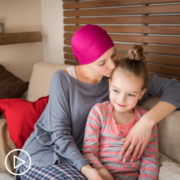
|
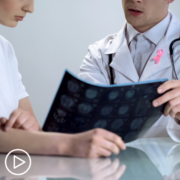
|

Factors That Guide a Metastatic Breast Cancer Treatment Decision |
Transcript:
Dr. Kruse:
At this year’s San Antonio Breast Cancer Symposium, there were a few interesting presentations about the treatment of first-line metastatic triple-negative breast cancer that I think patients should be aware of.
Two of the presentations centered around trials that were presented in the past. Those reporting, patients reported outcomes from the IMpassion 130 study, which looked at chemotherapy for metastatic triple-negative disease plus the immunotherapy atezolizumab. And then, there was also an update on the results from the KEYNOTE-355 study, which was a study again of chemotherapy for metastatic triple-negative patients in combination with pembrolizumab, a different immunotherapy. And both of these studies showed that there was benefit for women in certain sub-groups of triple-negative breast cancer when looking at addition of immunotherapy.
And so, what I’d like to draw patients’ attention to with these presentations is that you have to be aware of if you fall into one of these categories so you know if you’re a candidate for the particular type of immunotherapy that can be added to chemotherapy. There are two different ways to test for if a patient is a candidate for immunotherapy and they are both tests that can be done on biopsies of metastatic or cancer recurrent sites in the body.
They can also be sent off of original breast cancer tumors. And what we now know is that for patients who do not have markers that suggest immune activation or where the immune system would be responsive to immunotherapy the addition of that extra therapy really does not help to improve cancer control over chemotherapy alone. And I think that’s a really important topic because everyone is very interested in immunotherapy, but it does have side effects of its own and it can actually be lasting side effects in terms of inflammation in organs like the liver, the colon, and the lungs.
And then, the third presentation that I’d like to bring up is the IPATunity study, which looked at the addition of a targeted therapy called ipatasertib to, again, chemotherapy for the first treatment of metastatic triple-negative disease.
And so, this is getting into an area of targeted therapy for metastatic triple-negative disease. And again, only looks at patients that have a particular marker that suggests sensitivity to this drug. And those are certain genetic markers, predominately changes in a DNA marker called PIK3CA. In this study, we actually found that there was no benefit for the targeted therapy added to chemotherapy for patients that had that genetic mutation, which was different than what was seen in earlier studies of the same combination. So, I think there’s more work to be done and it’s probably too early to say that this targeted therapy will not be used in treatment of metastatic breast cancer.
But what all of these research studies show together is that metastatic triple-negative cancer is not really just one disease. It’s very clear that within that one name, there are multiple different patient types and tumor types that need to be cared for differently.
And so, again, I think the theme from these abstracts and these research presentations is that we have to look into the right therapy for the right patient at the right time, which largely involved DNA-based testing.
So, when patients are thinking about their treatment options and how to best help with their providers about what treatment options exist for them, I think it’s important to recognize the type of testing that may be advantageous in your cancer type.
And so, for all metastatic breast cancer patients, we really recommend that they’ve had genetic testing to look for DNA changes like BRCA mutations that will lead to treatment options. For metastatic triple-negative disease, it’s important to make sure that you’re providers are testing for PDL1, which would make you a candidate for immunotherapy. And then, the more we learn about clinical trials, the more we have options for patients that have had drug-based DNA or genome-based testing. So, that’s an important term for patients to become familiar with is genomic testing.
And I think when you bring that up with your providers, they’ll know what you’re talking about and they’ll know that what you’re potentially interested in is new targeted therapy for the cancer that may either come in combination with chemotherapy or as a standalone treatment option. If you don’t have those options that are available, and FDA approved basis for regular routine patient care, there is always the option of clinical trials.
And so, if that is something that you’re interested in, genomic testing will often open the way. So, I think as you’re writing notes when you’re talking to your providers, you might wanna jot down whether or not you’ve had genetic testing and whether or not you’ve had genomic testing in the past, as both of those things will help potentially address all of your treatment options.
I’ve very hopeful about the research that is going to lead to new developments for breast cancer treatment in the next few years.
I think what we’ve seen both at this San Antonio Breast Cancer Symposium as well as other conferences in the recent past has been a lot of focus on finding the right treatment for the right patient at the right time. And so, patients seem to be very interested in finding out this information. They often come to clinic armed with the most recent data, which allows their providers to have really informed discussions about what the best treatment might be. And to talk about if the new treatments are not great right now, what treatments might look like in the future.
I think the other thing that’s encouraging about the research that we’ve seen presented at this conference is that some of these trials are very, very large. For example, the RxPONDER trial was a trial of over 9,000 patients. And I really think that’s amazing to get that many patients interested in research that may not directly impact their patient care but will impact the care of others moving forward.
It’s just a sign that our breast cancer patients are empowered, and they want to make a difference in the scientific community as a whole.
Breast Cancer Research News: SABCS Conference Highlights
Breast Cancer Research News: SABCS Conference Highlights from Patient Empowerment Network on Vimeo.
Expert Dr. Megan Kruse shares highlights from the 2020 San Antonio Breast Cancer Symposium (SABCS). Dr. Kruse provides an overview of what this news means for early stage breast cancer patients, along with her optimism about the future of breast cancer research and treatment.
Dr. Megan Kruse is a Breast Medical Oncologist at the Cleveland Clinic. More about this expert here.
See More From The Pro-Active Breast Cancer Patient Toolkit
Related Resources:
Transcript:
Dr. Kruse:
The San Antonio Breast Cancer Symposium is a national meeting with international presence that combines all of the latest data from research on breast cancer topics. It involves clinical research, basic science research, a lot of patient, and patient advocate support.
And the idea here is to bring together all the different disciplines that are involved in breast cancer patient care and do the best information and knowledge sharing that we can each year.
This year’s San Antonio Breast Cancer Symposium brought us a lot of interesting research focusing on early-stage breast cancer patients. I think the most important presentations that were given had to do with the treatment of high-risk lymph node-positive hormone receptor-positive breast cancer patients. And these were really across three abstracts. The first abstract of interest was the Monarch E study, which looked at high-risk women with hormone receptor-positive HER2-negative breast cancer and optimizing their medical therapy.
So, these patients are typically treated with anti-estrogen therapy and the idea of the research that was presented was if the addition of a targeted medication called abemaciclib or Verzenio could help to improve outcomes for women in this population. And what the trial found was that for women who took their anti-estrogen therapy for the usual length of time but added the abemaciclib for the first two years of that anti-estrogen therapy that there is actually an improvement in cancer-free survival time or an improvement in cure rates. And this was important because these women may not benefit from chemotherapy, as we’ll talk about in another abstract.
An addition research presentation that was given that goes alongside of the monarch E study was that of the Penelope B study. And the Penelope B took a similar population to what was studied in Monarch E. So, again high-risk women with lymph node-positive, hormone receptor-positive, HER2-negative breast cancer; however, in Penelope B, all of these patients had received pre-surgery chemotherapy.
And in order to qualify for the trial, the patients had to have some cancer that remained in the breast or the lymph nodes that was taken out at the time of their surgery. So, these are patients clearly in which chemotherapy did not do the whole job in terms of getting rid of the cancer. And again, the idea here was to add a second targeted therapy to the endocrine therapy to see if that would improve cancer-free time for patients in this population. The difference in this study was that the partner targeted therapy that was used was a drug called palbociclib or Ibrance.
And the drug was actually only used for one year in combination with endocrine therapy rather than two years as was used in the Monarch E study with abemaciclib. Interestingly enough, the Penelope B study was a negative study, meaning that it did not improve the cancer-free survival time for women who took the endocrine therapy plus targeted therapy compared to women who took the endocrine therapy alone.
So, I think that these are two interesting studies that one should look at together. And clearly, may impact what we do for the treatment of high-risk hormone receptor-positive women moving forward. The third abstract that I’d like to touch on that I think was important for women with early-stage breast cancer is the RxPONDER study, also known as SWOG 1007. And this study again was looking at lymph node-positive, hormone receptor-positive HER2-negative breast cancer patients and seeing if the addition of chemotherapy helped to improve their cancer-free survival compared to anti-estrogen therapy alone.
And so, in this study, while the study population was all women with early-stage breast cancer, meeting the one to three lymph node-positive criteria, you really have to break the results down into the results for pre-menopausal women and the results for post-menopausal women.
Because overall the study really showed no significant benefit to chemotherapy on top of endocrine therapy for women in this population; however, we did see that there was a clear benefit for women who were pre-menopausal. So, the women who had no benefit from chemotherapy were largely those who were post-menopausal, while those who were pre-menopausal derived extra benefit from chemo on top of anti-estrogen therapy. And that benefit depended on what the Oncotype recurrent score was.
With women that had the lowest of the recurrent scores having a chemo benefit of about three percent going up to over five percent for women who had Oncotype recurrent scores in the mid-teens to 25 range. In both of these groups, women who had Oncotype scores of 26 or above would have chemotherapy as per our standard of care.
So, I think that this abstract is important because in the past women who had lymph node-positive breast cancer generally received chemotherapy no matter what. More recently we’ve understood that not all of these cancers are created equal and that some cancers may not actually have benefit from chemotherapy in terms of improving cure rate. So, this study is a big step forward to help individualize and specify the treatment for women with lymph node-positive, hormone receptor-positive, HER2-negative early breast cancer.
I’ve very hopeful about the research that is going to lead to new developments for breast cancer treatment in the next few years.
I think what we’ve seen both at this San Antonio Breast Cancer Symposium as well as other conferences in the recent past has been a lot of focus on finding the right treatment for the right patient at the right time. And so, patients seem to be very interested in finding out this information. They often come to clinic armed with the most recent data, which allows their providers to have really informed discussions about what the best treatment might be. And to talk about if the new treatments are not great right now, what treatments might look like in the future.
I think the other thing that’s encouraging about the research that we’ve seen presented at this conference is that some of these trials are very, very large. For example, the RxPONDER trial was a trial of over 9,000 patients. And I really think that’s amazing to get that many patients interested in research that may not directly impact their patient care but will impact the care of others moving forward.
It’s just a sign that our breast cancer patients are empowered, and they want to make a difference in the scientific community as a whole.
How Can You Advocate for the Best Lung Cancer Care?
How Can You Advocate for the Best Lung Cancer Care? from Patient Empowerment Network on Vimeo.
What is the patient’s role in lung cancer care? Dr. Jessica Bauman discusses the importance of communication with your healthcare team as well as the benefits of taking advantage of supportive care options.
Dr. Jessica Bauman is assistant professor in the department of hematology/oncology and as associate program director of the hematology/oncology fellowship training program at Fox Chase Cancer Center in Philadelphia. Learn more about Dr. Bauman here.
See More From the The Pro-Active Lung Cancer Patient Toolkit
Related Programs:

|
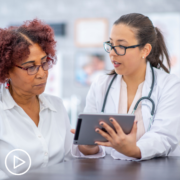
What You Should Know When Making a Lung Cancer Treatment Decision |

Navigating Lung Cancer Treatment Decisions
|
Transcript:
Katherine:
Let’s talk about patient self-advocacy. Patients can sometimes feel like they’re bothering their healthcare team with their comments and questions. But why is it important for patients to speak up when it comes to their symptoms and their side effects?
Dr. Bauman:
So, this, I would say, it’s a partnership. The bottom line is, and if I don’t know that something is going on, I can’t help to solve the problem. And if I don’t know about something, a new symptom that could be, potentially, majorly concerning, patients can also get really sick or even end up in life-threatening situations. And so, ignoring things or just hoping things will go away is not in a patient’s best interest.
I think that it is critical that patients are their own self-advocate. I think that I say that often, and I’ve already said that a couple of times on this, but we don’t know unless we’re hearing from them what’s going on. And so, it is so important for patients to keep us updated if they’re worried about something. Certainly, we see them very frequently, and so they can often tell us at their visits what’s going on. But overall, the in-between time is just as critical because it is often the treatments that we give can cause side effects at any time. And so, it is really important that we know about anything that’s going on and for patients to always give us a call.
I mean, that’s the bottom line is, is that if they’re worried about something, we need to know about it.
Katherine:
What supportive care options are there for patients who may have pain management difficulties or even emotional support? Where do they start?
Dr. Bauman:
So, there are often many different kinds of supportive care for patients. I would say that oncologists, of course, are one layer of supportive care. We do a lot of help with symptom management and often even pain management as well as coping and emotional support. However, there are also other people often within cancer centers that are also available to help. And this includes social workers. It also includes psychologists and psychiatrists.
And then the other thing that I think is really important to mention is that we know for patients who have lung cancer or an advanced lung cancer diagnosis, that integrating a palliative care team – a supportive and palliative care team – early into their diagnosis actually helps them live longer as well as better.
They have better quality of life, and they have decreased problems with mood.
And so, we know that supportive care and palliative care, specifically in lung cancer, is particularly helpful for both patients and their caregivers. And so, it’s important for patients to also know that there is a whole team, that I think of as, sort of, an extra layer of support, that can help them with symptom management as well as with coping with the day-to-day of what can be a devastating diagnosis.
How Do I Know If My Lung Cancer Treatment Is Working?
How Do I Know If My Lung Cancer Treatment Is Working? from Patient Empowerment Network on Vimeo.
How is lung cancer treatment monitored? Lung cancer specialist Dr. Jessica Bauman explains how regular imaging is used to gauge treatment effectiveness.
Dr. Jessica Bauman is assistant professor in the department of hematology/oncology and as associate program director of the hematology/oncology fellowship training program at Fox Chase Cancer Center in Philadelphia. Learn more about Dr. Bauman here.
See More From the The Pro-Active Lung Cancer Patient Toolkit
Related Programs:
|
|

What You Should Know When Making a Lung Cancer Treatment Decision |

|
Transcript:
Katherine:
Once a patient has started treatment, how do you know if it’s working?
Dr. Bauman:
So, we do regular imaging. So, once you have a diagnosis of lung cancer, a CAT scanner will become your friend. In general, depending on what stage of lung cancer you have, you will have a bunch of imaging up front, and then once a treatment plan is put into place, after that treatment has either been completed or started, you will be monitored, in general, regularly for the lung cancer diagnosis. Now, after surgery, that will be for more for surveillance to make sure that the lung cancer doesn’t come back. But if it is more in the setting of a stage IV lung cancer, then the imaging really helps us determine, “Is the treatment working or not?”
And so, after we start a treatment, usually anywhere between six and eight weeks, we repeat imaging to see, “Is this working? Is it smaller? Is it the same? Has it grown?”
And based on that imaging, and based on how the patient is doing with the treatment, we then decide, “Do we continue this treatment, or do we need to change to a new treatment?” And so, we regularly monitor the patient’s cancer through regular imaging.

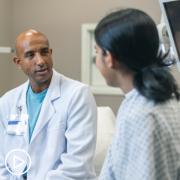
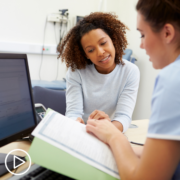

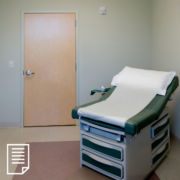
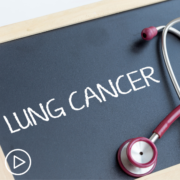



Katherine Banwell:
Let’s start with a basic question. What are the stages of colon cancer?
Dr. Krishnamurthi:
Colon cancer is categorized in four stages – stage 1, 2, 3, 4. This takes into account the tumor itself, how thick it is. These tumors start on the inside of the colon, like as a polyp. Then they can grow through the colon wall. The tumor thickness and has it spread to any of the lymph nodes? and has it spread further to a distant organ like liver or lungs?
That’s a tumor node metastasis. Considerations that go into the staging. Stage 1 colon cancer or colorectal cancer would be a very shallow tumor, maybe just in a polyp and hasn’t spread to any nodes or anywhere else. Stage 2 is when the tumor is thicker. It may be involving the full thickness of the colon or rectum but has not spread to any nearby lymph nodes. Stage 3 is when the cancer has spread to regional or nearby lymph nodes. Stage 4 is when it’s metastatic or it’s spread to another organ.
Katherine:
Okay. Thank you.